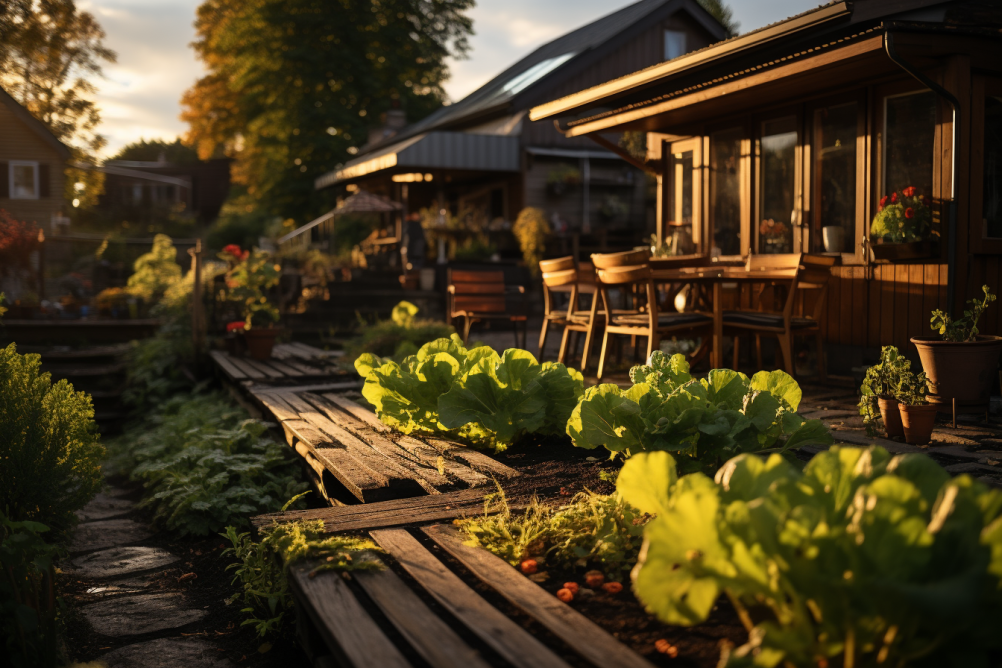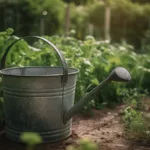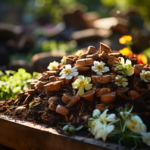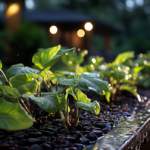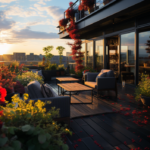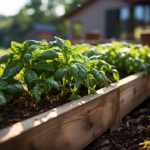Table of Contents
Creating a Lush and Healthy Garden: Mastering Garden Irrigation with Expert Tools, Techniques, and Timings
Hey there, green thumbs and gardening enthusiasts! Welcome to our extensive guide to garden irrigation. Whether you’re a seasoned gardener or just starting out, this guide is here to help you create a lush and thriving garden through effective watering practices.
We all know that providing the right amount of water at the right time is crucial for the health and vitality of our plants. But with so many tools, techniques, and timings to consider, it can quickly become overwhelming. Fear not, though, because we’ve got you covered!
In this comprehensive guide, we’ll take you through everything you need to know about garden irrigation. From the essential tools you’ll need to get started, to the different techniques you can employ for specific plant types, we’ll leave no stone unturned.
You’ll learn about traditional watering methods like hand watering and sprinklers, as well as more advanced systems like drip irrigation and soaker hoses. We’ll discuss the pros and cons of each method, and help you decide which one is best for your garden.
But that’s not all! We’ll also delve into the importance of timing your watering sessions, including the best times of day and intervals between waterings. We’ll provide you with practical tips to optimize water usage, prevent water waste, and promote deeper root growth for stronger and more resilient plants.
So, get ready to become an irrigation expert and transform your garden into a paradise of flourishing plants. Let’s get started on this exciting journey together!
Essential Tools for Garden Irrigation
Good irrigation practices start with having the right tools at your disposal. Here’s a rundown of the essential tools you’ll need to effectively water your garden:
- Garden Hose: A garden hose is a must-have for any gardener. Look for a durable hose made of high-quality material that can withstand different weather conditions. Opt for a suitable length that can reach all areas of your garden.
- Watering Wand or Nozzle: Attach a watering wand or nozzle to your hose for precise and gentle watering. These tools allow you to control the water flow and are particularly useful for delicate plants or flower beds.
- Sprinklers: Sprinklers are an efficient way to cover larger areas of your garden. Choose sprinklers with adjustable settings to control the spray pattern and water volume.
- Drip Irrigation System: Drip irrigation is a versatile and efficient watering method. With a network of tubes and emitters, it delivers water directly to the plant roots, minimizing water loss through evaporation. It’s perfect for conserving water and providing targeted irrigation.
- Soaker Hoses: Similar to drip irrigation, soaker hoses release water slowly and directly into the soil. They’re great for garden beds, vegetable gardens, and hedges where you want to avoid watering the foliage.
- Water Timer: A water timer is a game-changer for busy gardeners. Set it up with your drip irrigation or sprinkler system to automate your watering schedule. You’ll have peace of mind knowing that your plants are getting watered even when you’re away.
- Rain Gauge: Keeping track of rainfall is essential for effective irrigation. Install a rain gauge in your garden to monitor precipitation levels. This helps you adjust your watering routine accordingly, avoiding overwatering during rainy periods.
Having these essential tools in your gardening arsenal will ensure you have the right equipment to provide adequate water to your plants. In the next section, we’ll explore the different techniques you can use for garden irrigation to make the most of these tools.
Different Techniques for Efficient Watering
Different Techniques for Efficient Watering
When it comes to watering your garden, employing different techniques can help you achieve efficient and effective results. Here are some popular techniques to consider:
- Hand Watering: Grab your trusty watering wand or nozzle and give your plants a personal touch. Hand watering allows you to have direct control over the amount and location of water your plants receive. It works best for small gardens, container plants, and delicate flowers that require attention to detail.
- Sprinklers: Sprinklers are a classic choice for larger garden areas. They distribute water evenly over a wide area. Choose sprinklers with adjustable patterns to ensure you’re not wasting water on paths or non-vegetated areas.
- Drip Irrigation: Drip irrigation is a highly efficient technique that delivers water directly to the root zone of plants. It minimizes water loss through evaporation and reduces the chances of fungal diseases by avoiding wetting the foliage. It’s ideal for vegetable gardens, flower beds, and shrubs.
- Soaker Hoses: Soaker hoses work by slowly releasing water directly into the soil, ensuring deep and thorough root penetration. They’re excellent for beds, borders, and hedgerows. Place them around the base of plants, and the water will seep into the ground, hydrating the roots with minimal waste.
- Mulching: Mulching isn’t a watering technique per se, but it helps to retain moisture in the soil. Apply a layer of organic mulch around plants to reduce evaporation and maintain soil moisture levels. It also helps to regulate soil temperature, suppress weed growth, and enhance soil health.
By incorporating these different techniques into your garden irrigation routine, you can tailor your watering method to suit the specific needs of each plant. Experiment with different techniques and observe how your plants respond to find the best approach for your garden.
In the next section, we’ll dive into the importance of timing your watering sessions to maximize water absorption and plant health.
Mastering the Timing of Garden Irrigation
Mastering the Timing of Garden Irrigation
Timing your garden irrigation plays a vital role in the overall health and success of your plants. Here are some key considerations for mastering the timing of your watering sessions:
- Morning is Best: Watering your garden in the morning is generally the optimal time. The cooler temperatures and lower wind speeds allow water to penetrate the soil effectively without excessive evaporation. It also ensures that plants have ample moisture throughout the day, promoting their growth and resilience.
- Avoid Watering in the Afternoon: It’s best to avoid watering during the hottest parts of the day, typically between noon and 4 PM. The intense heat can cause water to evaporate rapidly before it reaches the plant roots. If you must water in the afternoon, consider shading your plants or using a technique that minimizes foliage wetting, like drip irrigation.
- Evenings Can Work: Watering in the evening can be an alternative if mornings aren’t possible. However, it’s essential to allow enough time for the plant foliage to dry before nightfall. Damp foliage at night can increase the risk of fungal diseases. Ensure adequate airflow and avoid overhead watering to mitigate this potential issue.
- Observe Plant Needs: Different plants have varying water requirements. Consider the specific needs of your garden plants and adjust your watering schedule accordingly. For example, shallow-rooted plants may need more frequent watering, while deep-rooted ones can tolerate longer intervals between watering sessions.
- Monitor Soil Moisture: Regularly check the moisture levels of your soil to avoid over or under watering. Stick your finger into the soil about an inch or two. If it feels dry, it’s time to water. If it feels moist, hold off for a bit. Remember that plants prefer slightly moist soil, not waterlogged or bone dry conditions.
By mastering the timing of your garden irrigation, you’ll be ensuring that your plants receive water at the most beneficial times, maximizing their health and productivity. Continue to the next section where we’ll discuss the importance of creating a watering schedule and finding the right intervals between waterings.
Advanced Irrigation Systems: Drip Irrigation and Soaker Hoses
Advanced Irrigation Systems: Drip Irrigation and Soaker Hoses
When it comes to efficient and targeted watering, advanced irrigation systems like drip irrigation and soaker hoses are game-changers. Let’s delve into these systems and explore their benefits:
- Drip Irrigation: Drip irrigation is a highly efficient system that delivers water directly to the root zone of plants, reducing water wastage and minimizing weed growth. It consists of a network of tubes with emitters that release water at a slow and steady rate. The water is applied at the base of the plants, ensuring deep root penetration and minimizing evaporation. Drip irrigation is perfect for vegetable gardens, flower beds, and even container plants.
- Soaker Hoses: Soaker hoses are porous hoses that release water uniformly along their entire length. They’re perfect for delivering water directly to the soil, giving plants a deep, thorough watering without wetting the foliage. Soaker hoses are particularly useful for garden beds, borders, and hedgerows. They can be placed strategically around plants, providing a slow, steady water supply right at the root zone.
Both drip irrigation and soaker hoses have tremendous benefits for gardeners:
- Water Conservation: These systems significantly reduce water waste by delivering water directly where it’s needed, minimizing evaporation and runoff.
- Time-Saving: With effective water distribution, these systems save you time and effort spent on manual watering. Once installed, they can be set up with automatic timers for a hassle-free irrigation schedule.
- Plant Health and Growth: By providing consistent moisture directly to the roots, plants thrive and grow stronger. They’re less prone to stress, diseases, and water-related issues.
- Weed Control: Since water is precisely targeted to the plant roots, there’s less moisture available for weed growth, helping to keep unwanted plants at bay.
Consider incorporating drip irrigation or soaker hoses into your garden for efficient and effective watering. These systems not only save water but also enhance the overall health and vitality of your plants. In the next section, we’ll explore the importance of creating a watering schedule and finding the right intervals between waterings.
Conclusion
And that, dear gardening enthusiasts, wraps up our extensive guide to garden irrigation. We’ve covered the essential tools you need to have in your arsenal, explored different techniques for efficient watering, discussed the importance of timing your watering sessions, and highlighted the benefits of advanced irrigation systems like drip irrigation and soaker hoses.
Remember, successful garden irrigation is all about finding the right balance – providing your plants with enough water without overdoing it. By understanding the specific needs of your plants, using the appropriate tools and techniques, and timing your watering sessions correctly, you’ll create a garden that thrives and flourishes.
Don’t forget to regularly monitor soil moisture levels, adjust your watering schedule based on weather conditions, and adapt to the changing needs of your plants throughout the seasons. With practice and observation, you’ll become a master in the art of garden irrigation.
So, roll up your sleeves, grab your watering wand or hose, and get ready to transform your garden into a verdant paradise. Happy gardening, and may your plants always be well-watered and thriving!

